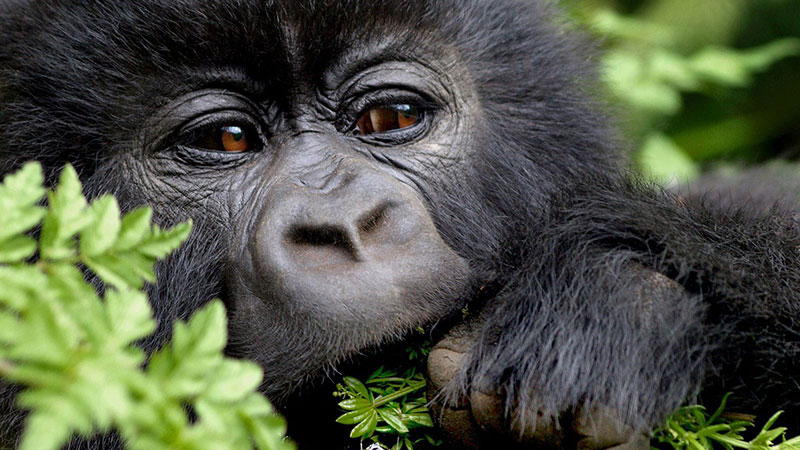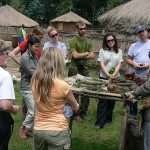What does gorilla eat; Mountain gorillas are folivores, feeding on leaves, stems, pith, and shoots of terrestrial herbaceous vegetation. At some sites, western lowland gorillas have been known to break open termite nests and feed on the larvae. On your gorilla safari, you will watch them move around plugging leave and plant shoots, as they feed on them. However, they do not feed on whatever come their way, they preferentially choose high quality, high protein, low fiber, and low tannin foods from a small number of species and incorporate little fruit into their diets.
What does gorilla eat in the Jungle?
Gorillas spend much of their time foraging and resting, with the group traveling a few hundred meters between several daily feeding bouts. Each group wanders through a home range of about 2–40 square km (0.77–16 square miles), though several different groups may share the same part of the forest. Though they only utilize a few species in each habitat, mountain gorillas show wide dietary flexibility which enables them to occupy a wide variety of habitats within their range.
Because they depend on a readily available, easily accessed food source, there is little competition for resources between groups, their home ranges are small. The diet of eastern lowland gorillas is more diverse than the mountain gorillas‘ and changes seasonally. While leaves and pith are staple parts of their diets, eastern lowland gorillas depend heavily on fruit (25 percent of their total diet), especially during the times of year when fruits are abundant. When they include insects in their diet, eastern lowland gorillas prefer ants. Eastern lowland gorillas generally use a small area for a few days and then travel long distances to another area.
Eastern lowland gorillas that depend more heavily on fruit must travel farther in a day to find fruiting trees and have larger home ranges because of a relative scarcity of fruit. Their home ranges vary from 2.7 to 6.5 km² while their day range is between 154 and 2280 m. Western lowland gorillas have little dependable access to high quality terrestrial herbs across their range, but some areas are rich in aquatic herbs, and they do eat herbaceous vegetation.






